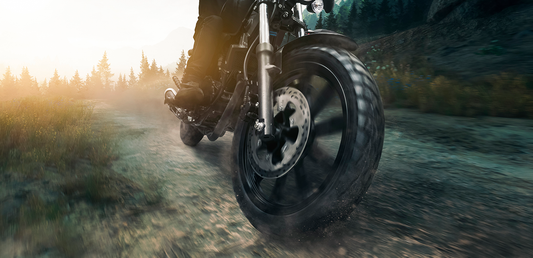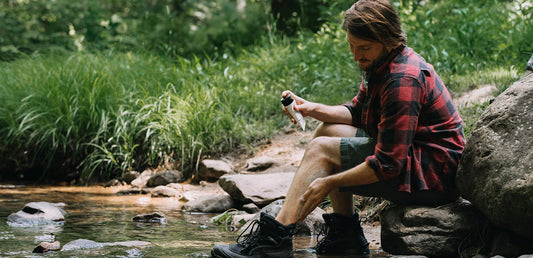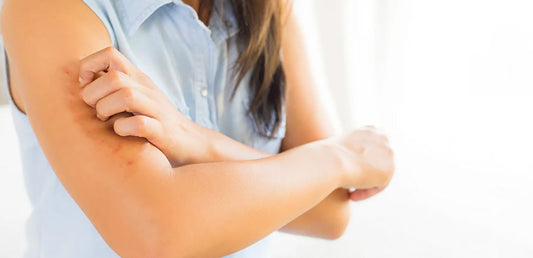
How Poison Ivy Lurks in Winter
Most people think poison ivy is only a warm-weather problem, with its lush green leaves posing a threat during hikes, yard work, or camping trips. But here’s the catch: poison ivy doesn’t take the winter off. Even when the plant appears dormant, the urushiol oil that causes those infamous rashes is still very much active. Whether you’re clearing brush, gathering firewood, or simply brushing past a bare vine, wintertime encounters with poison ivy can still lead to an itchy, uncomfortable rash.
Understanding how poison ivy lurks in winter, how to identify it, and how to protect yourself are essential steps for outdoor enthusiasts. Let’s dive in to uncover the risks and explore how products like the Tecnu Ivy Complete Kit can help.
Can You Get Poison Ivy Rash in the Winter?
Yes, you can absolutely get a poison ivy rash in the winter. The itchy, blistering reaction associated with poison ivy is caused by urushiol oil, a toxic resin present in every part of the plant. While the leaves are often the focus during warmer months, urushiol is also found in the stems, vines, and roots. During winter, when the leaves have fallen, the vines remain active and capable of causing a rash if touched.
Urushiol is incredibly resilient. It can stay potent for years, even on dead vines or dried plant material. This means that winter yard work, trail maintenance, or even handling firewood wrapped with poison ivy vines can lead to exposure and a rash. It’s important to remember that poison ivy isn’t “inactive” in winter—it’s simply harder to spot.
Identifying Poison Ivy in the Winter
Spotting poison ivy in winter requires a trained eye. Without its distinctive “leaves of three,” the plant blends into its surroundings, often going unnoticed until it’s too late. However, there are a few key characteristics to look for:
- Hairy Vines: Poison ivy vines are typically reddish-brown and covered in thin, hair-like aerial roots that allow the plant to climb. These “fuzzy” vines are a signature feature, making them easier to identify even in the absence of leaves.
- Clusters of Berries: During the colder months, poison ivy may produce small, greenish-white berries that cling to the vines. These berries persist even after the leaves have dropped and can serve as a warning sign of the plant’s presence.
- Bare Vines and Stems: Poison ivy vines often grow up tree trunks or sprawl across the ground. While they might look like harmless, woody stems, they still contain urushiol and should be avoided.
If you’re unsure whether a vine is poison ivy, it’s best to err on the side of caution. Avoid contact with any unidentified vines or stems, especially those with a hairy or textured appearance.
Preventing Poison Ivy Rash in the Winter
Prevention is your best defense against a poison ivy rash, especially during the winter when the plant is harder to recognize. Start by wearing protective clothing such as long sleeves, pants, and gloves when working outdoors. Heavy-duty gloves are particularly important if you’re handling firewood or clearing brush, as they act as a barrier between your skin and urushiol oil.
Stick to well-maintained trails during winter hikes, and avoid touching vines or tree trunks unnecessarily. If you suspect you’ve come into contact with poison ivy, act quickly to minimize the risk of a rash. Tecnu Cleanse, part of the Tecnu Ivy Complete Kit, is specifically designed to remove urushiol oil from your skin. Use it as soon as possible after exposure to stop the rash before it starts.
It’s also important to clean your clothing, tools, and gear after outdoor activities. Urushiol can linger on surfaces for extended periods, leading to secondary exposure if not properly removed. The Tecnu Ivy Complete Kit includes Tecnu Detox Wipes that can effectively remove the rash-causing oil from some of these items.
How to Treat Poison Ivy Rash
If you’ve developed a poison ivy rash, prompt treatment can help alleviate discomfort and speed up recovery. Start by gently washing the affected area with Tecnu Cleanse which removes residual urushiol and exfoliates the skin for a deep clean. This step is crucial even if you believe the oil was removed during initial exposure, as any lingering urushiol can worsen the rash.
For relief from itching, swelling, and irritation, apply Tecnu Treat another component of the Ivy Complete Kit. This anti-itch gel provides fast, soothing relief to inflamed skin.
For severe rashes or symptoms that spread to sensitive areas like the face or genitals, consult a healthcare professional for additional treatment options.
Poison ivy may not look as menacing in winter as it does in summer, but don’t be fooled. The plant’s urushiol oil remains active year-round, making it a hidden hazard during colder months. Whether you’re chopping firewood, hiking through the woods, or clearing your yard, understanding how to identify and avoid poison ivy in winter is key to staying rash-free.
If exposure does occur, the Tecnu Ivy Complete Kit is your best ally. From removing urushiol oil to soothing itchy rashes, this all-in-one kit provides everything you need to handle poison ivy effectively. Remember, prevention and prompt treatment are the best ways to ensure your winter adventures remain enjoyable and itch-free.



